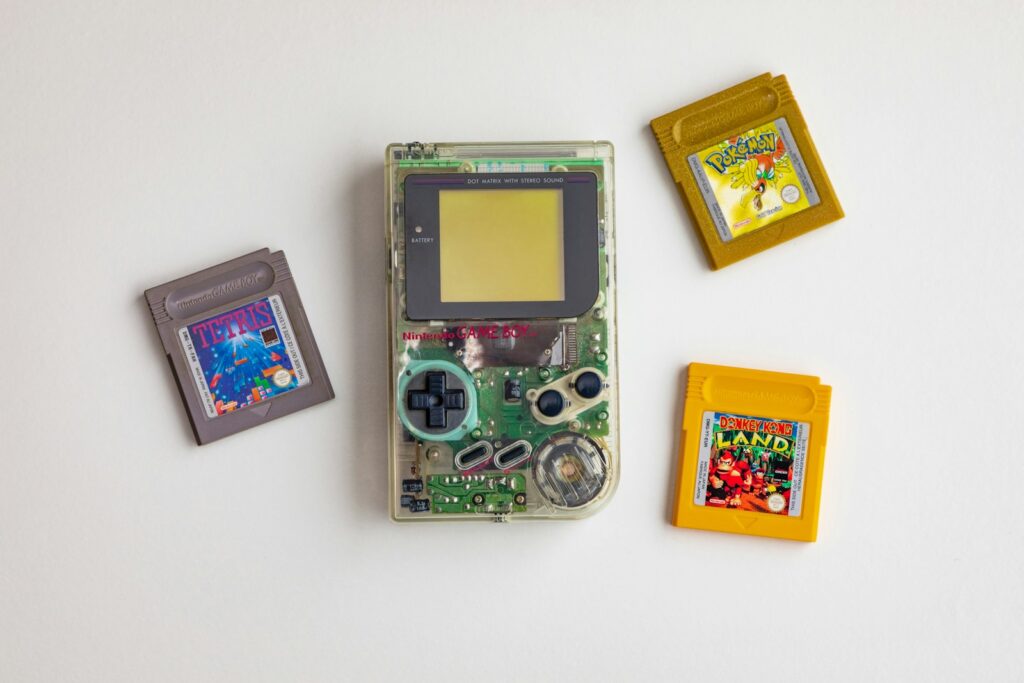Tetris Original: Few video games have stood the test of time like Tetris. This iconic puzzle game has captivated players for decades, earning its place as a beloved classic. From its humble beginnings in the Soviet Union to becoming a global phenomenon, Tetris’s journey is nothing short of extraordinary. Let’s dive deep into the world of Tetris, exploring its history, gameplay, and lasting impact.
The Birth of a Legend: Tetris’s Origins
The Creation of Tetris

In 1984, a Soviet software engineer named Alexey Pajitnov created Tetris. Working at the Dorodnitsyn Computing Center of the Soviet Academy of Sciences in Moscow, Pajitnov was inspired by his love for puzzles. He wanted to create a game that combined simplicity with addictive gameplay.
The First Prototype
Using an Electronika 60, a Soviet computer, Pajitnov developed the first version of Tetris. The game’s name derives from the Greek word “tetra,” meaning four, as all the game’s pieces are made up of four squares. The initial prototype was basic, yet the core mechanics were already in place.
The Spread to the West
Tetris quickly spread beyond the Soviet Union. By 1986, the game had reached Hungary, where it was noticed by Robert Stein of Andromeda Software. Stein negotiated the rights to Tetris, which led to its eventual licensing to several major gaming companies in the West.
Gameplay: The Core Mechanics of Tetris
The Objective
The objective of Tetris is simple: arrange falling tetrominoes (geometric shapes composed of four squares) to create complete horizontal lines, which then disappear, earning points and freeing up space for more pieces. The game ends when the stack of tetrominoes reaches the top of the playing field.
The Tetrominoes

There are seven unique tetromino shapes: I, O, T, S, Z, J, and L. Each piece behaves differently, adding complexity and requiring strategic thinking to place them optimally.
Rotations and movements
Players can rotate the tetrominoes and move them horizontally to fit them into the desired positions. Mastering these controls is crucial for success, especially as the game speeds up over time.
Level Progression
As players clear lines, the game increases in speed, presenting a greater challenge. This escalating difficulty keeps players engaged and pushes their reflexes and decision-making skills to the limit.
The Cultural Impact of Tetris
Tetris and the Game Boy
Tetris achieved worldwide fame with its release on the Nintendo Game Boy in 1989. Bundled with the handheld console, it played a pivotal role in the Game Boy’s success, making it a must-have device.
Iconic Soundtrack
The Tetris theme music, based on the Russian folk song “Korobeiniki,” is instantly recognizable. This catchy tune has become synonymous with the game and has been remixed countless times.
Tetris in Pop Culture

Tetris has left an indelible mark on pop culture. It has been referenced in movies, TV shows, and even high-fashion runways. The simplicity and elegance of its design have made it a timeless piece of entertainment.
Academic Studies
The game has also attracted academic interest. Studies have explored Tetris’s impact on cognitive skills, such as spatial awareness and problem-solving abilities. It’s even been used in research on addiction and the psychological effects of gaming.
The Evolution of Tetris
From 8-Bit to Modern Graphics
Tetris has evolved significantly since its 8-bit origins. Modern versions feature high-definition graphics, new gameplay modes, and online multiplayer options. Despite these changes, the core gameplay remains unchanged.
Tetris Effect
One notable modern iteration is Tetris Effect, released in 2018. This game combines the classic Tetris gameplay with stunning visuals and a mesmerizing soundtrack, creating a highly immersive experience.
Tetris 99: Battle Royale
Tetris 99, launched in 2019, introduced a competitive twist to the classic game. This battle royale version pits 99 players against each other, with the last player standing crowned the winner. It’s a testament to Tetris’s adaptability and enduring appeal.
Mobile Tetris
Tetris has also made a successful transition to mobile platforms. Various versions are available on smartphones, allowing fans to enjoy the game anywhere, anytime.
Why Tetris Endures
Simplicity and depth
The simplicity of Tetris is deceptive. While the game is easy to learn, it offers infinite depth and challenge. This balance between accessibility and complexity is a key reason for its lasting popularity.
Addictive Gameplay
Tetris’s addictive nature is well documented. The satisfaction of clearing lines and the challenge of managing the falling pieces create a compelling loop that keeps players coming back for more.
Universal Appeal
Tetris transcends age, culture, and language barriers. Its universal appeal has helped it maintain a loyal fanbase across generations.
Continuous Innovation
The ability to innovate while preserving the core mechanics has kept Tetris relevant. From virtual reality versions to competitive eSports, Tetris continues to evolve with the times.
Tips and Tricks for Mastering Tetris
Understand the pieces
Familiarize yourself with the seven tetrominoes and their rotations. Knowing how each piece behaves is crucial for effective placement.
Plan Ahead
Always look at the next piece and plan your moves accordingly. This foresight can prevent unnecessary gaps and mistakes.
Create Tetrises
A “Tetris” is clearing four lines at once with a straight I-piece. Strive to set up these opportunities for maximum points.
Manage the stack
Keep your stack of pieces as low and flat as possible. This gives you more room to maneuver and place pieces effectively.
Stay calm under pressure
As the game speeds up, it’s easy to panic. Stay calm and focused, and rely on your skills and strategy to handle the increasing pace.
The Legacy of Tetris
Influence on Game Design
Tetris has influenced countless other games. Its mechanics have inspired developers across genres, leading to the creation of numerous puzzle and strategy games.
Tetris World Championships
The Classic Tetris World Championship (CTWC) is an annual event that celebrates the best Tetris players from around the world. This competition highlights the enduring competitive scene surrounding the game.
Tetris in Education
Tetris is used in educational settings to teach problem-solving and spatial reasoning. Its straightforward rules and engaging gameplay make it an excellent teaching tool.
Tetris and Well-Being
Playing Tetris has been shown to have therapeutic benefits. It’s used in stress relief and even in the treatment of certain psychological conditions.
Tetris in the Digital Age
With the rise of streaming platforms, Tetris has found a new audience. Gamers share their gameplay online, contributing to the game’s continued popularity and relevance.
In Conclusion, Tetris is more than just a game; it’s a cultural phenomenon. Its simple yet deep gameplay, universal appeal, and continuous innovation have ensured its place in the annals of video game history. Whether you’re a casual player or a competitive enthusiast, Tetris offers something for everyone. As we celebrate this classic puzzle game, we look forward to seeing how it will continue to evolve and captivate future generations.
FAQs About Tetris Original
1. What is the highest possible score in Tetris?
While there’s no definitive highest score due to the game’s endless nature, competitive players often aim to achieve the highest scores possible within certain constraints, such as time limits or specific versions of the game.
2. Can playing Tetris improve cognitive skills?
Yes, studies have shown that playing Tetris can enhance cognitive abilities such as spatial awareness and problem-solving and even reduce symptoms of PTSD.
3. Is Tetris available on modern gaming consoles?
Absolutely! Tetris is available on a variety of modern platforms, including PlayStation, Xbox, and Nintendo Switch, as well as mobile devices and PCs.
4. What is the Tetris Effect?
Tetris Effect is a modern version of the game that combines traditional gameplay with stunning visuals and an immersive soundtrack, providing a unique and captivating experience.
5. How did tetris become so popular?
Tetris’s popularity soared with its release on the Nintendo Game Boy in 1989. Its simple yet addictive gameplay, coupled with the portable nature of the Game Boy, made it a global sensation.


